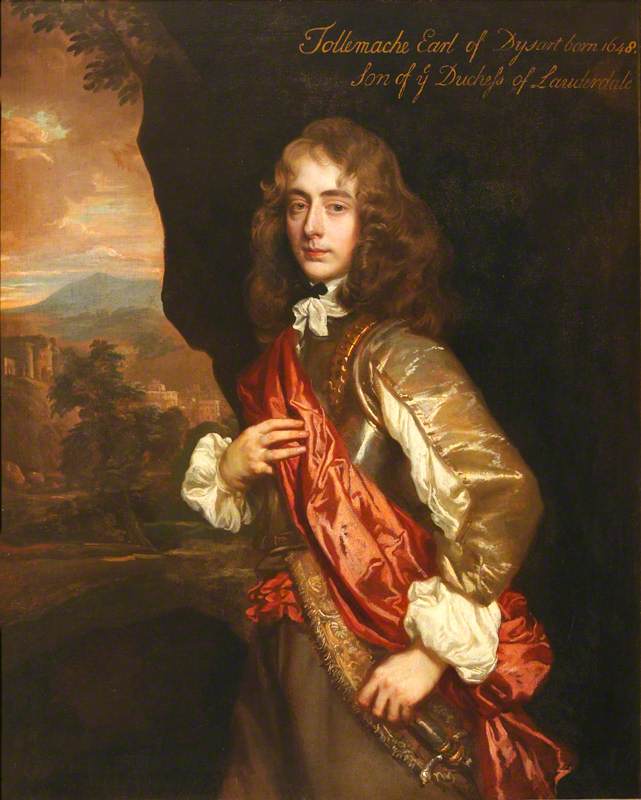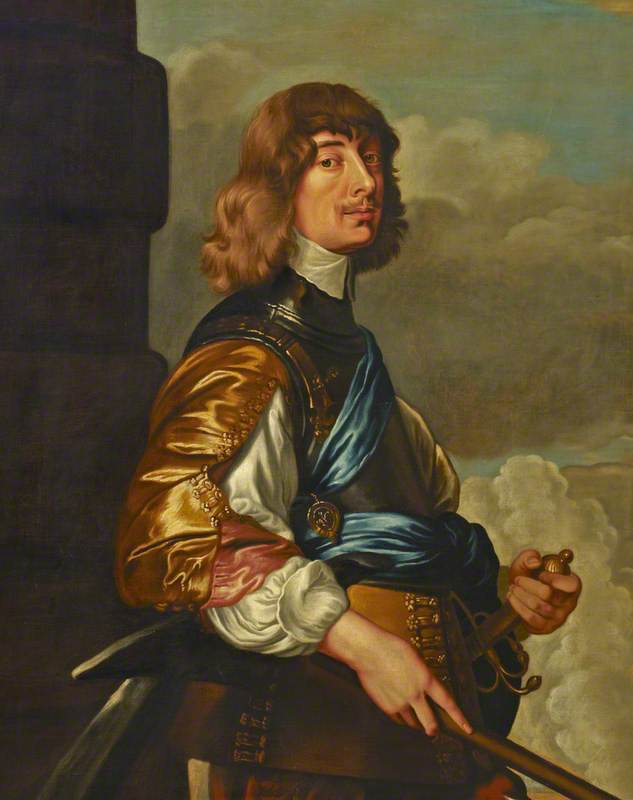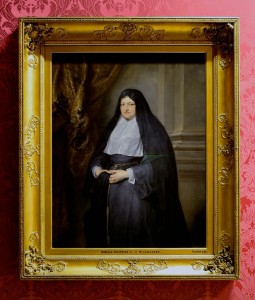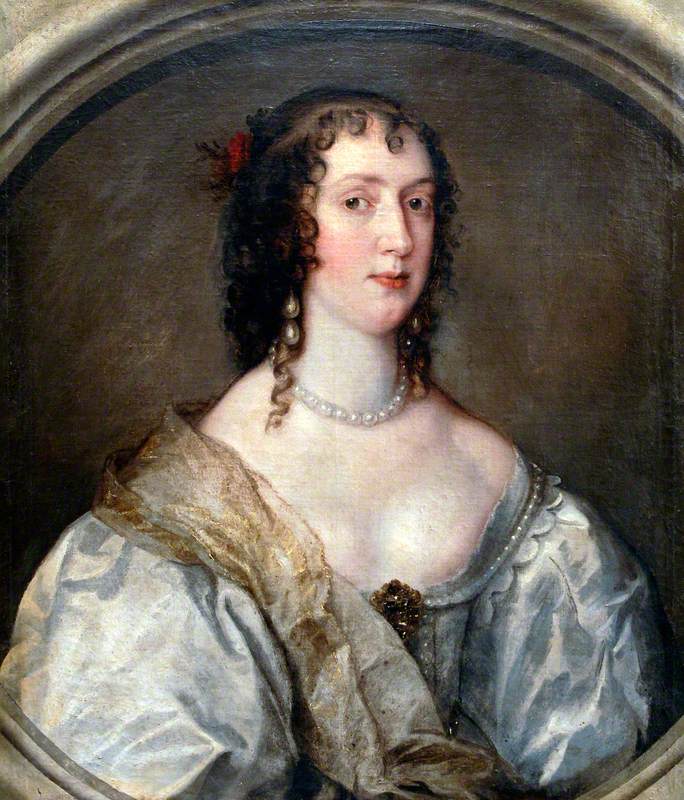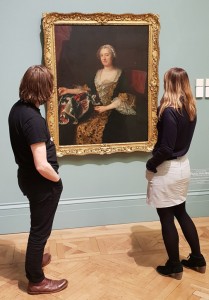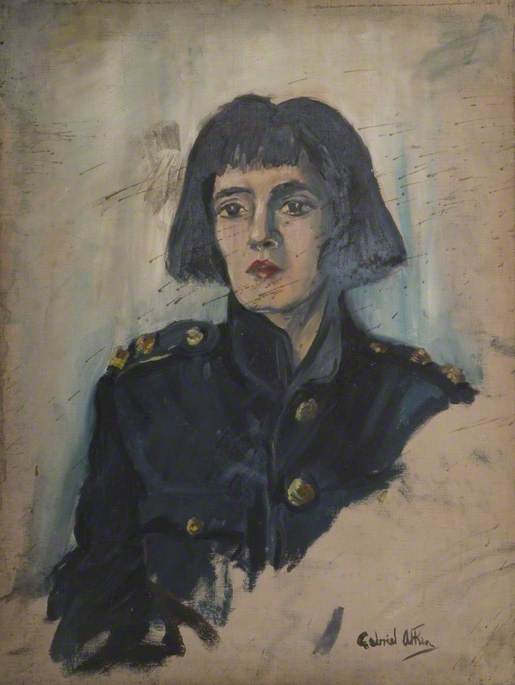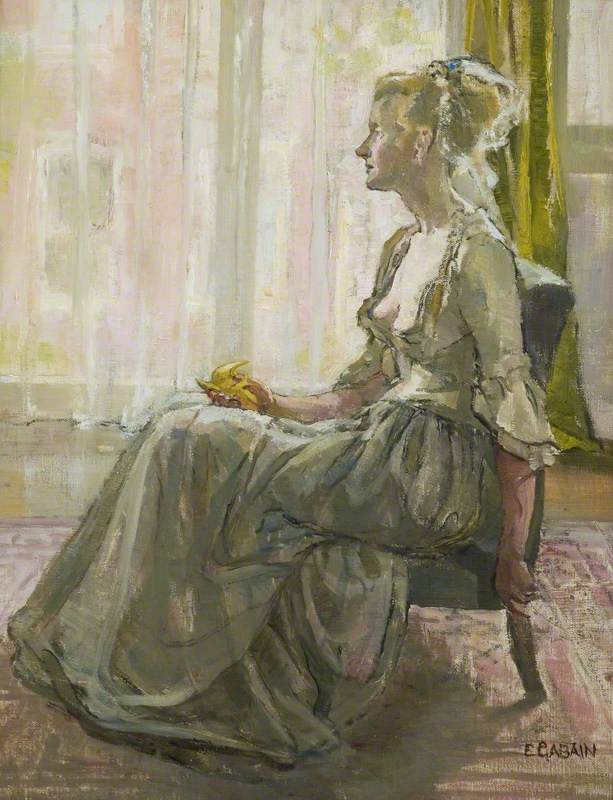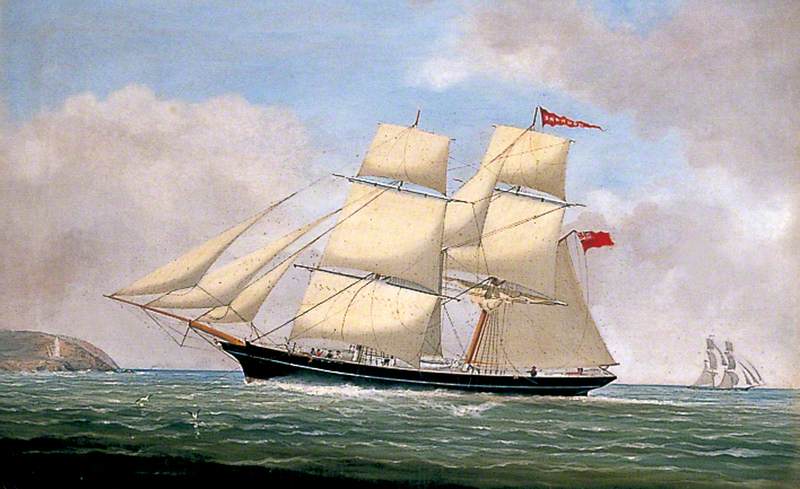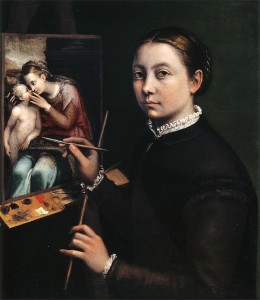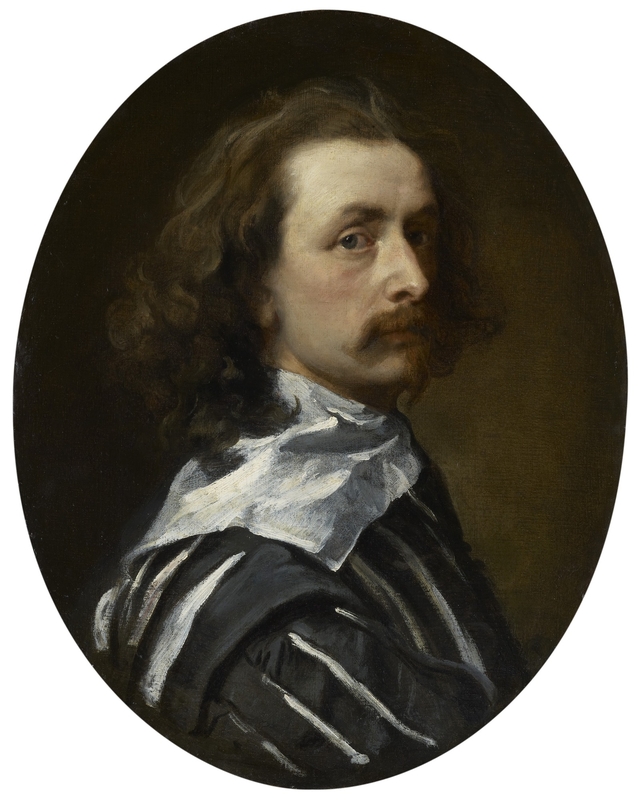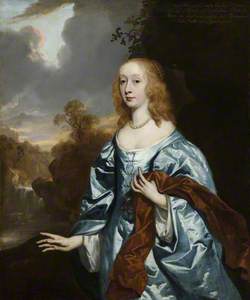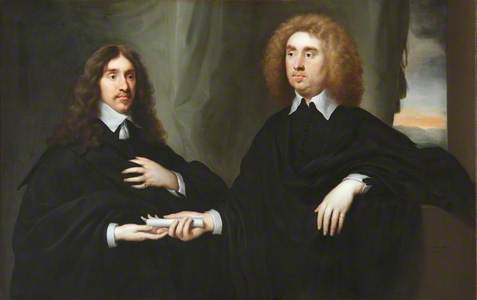The seventeenth century was a time of enormous political upheaval in Britain: with a new dynasty (the Stuarts) on the throne, the country saw scandal, treason, revolution and glamour. Against this backdrop, the arts flourished. Painters such as Anthony van Dyck and Peter Lely created portraits of the great and the good, the beautiful and the infamous to new extents of naturalism and swagger. Among these sitters were Lord and Lady Belhaven.
Margaret, Wife of John Hamilton, 1st Lord Belhaven and Stenton
1641–1700
Anthony van Dyck (1599–1641) (after) 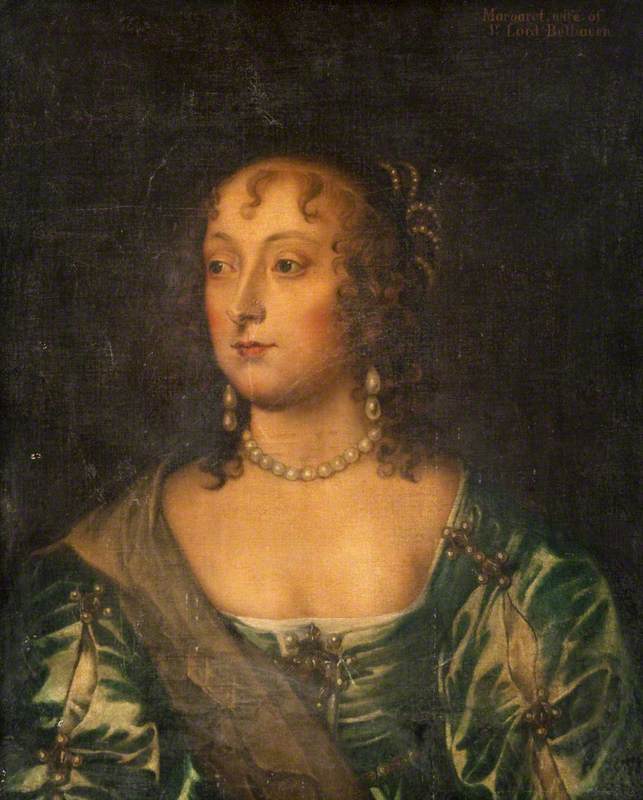
Lady Margaret Belhaven was the illegitimate daughter of James, 2nd Marquess of Hamilton and Lady Anne Stewart (daughter of Walter Stewart, 1st Lord Blantyre). As such, Margaret occupied an unusual position within the early seventeenth-century aristocracy. Despite the scandal that surely must have arisen from her birth, she married John Hamilton, 1st Baron of Belhaven and Stenton. He inherited the Baronetage of Broomhill in 1645 from his father and was raised to the peerage by Charles I in 1647. As the wife of a peer, Margaret had wealth and property to manage, including Biel House in the parish of Haddington, East Lothian which the couple moved into in 1644. The couple's descendants continued to live at Biel until it was sold in 1959.
During the Wars of the Three Kingdoms, Lord Belhaven was a fervent Royalist supporter and was present in the Duke of Hamilton's army at the 1651 Battle of Preston. He escaped capture and continued to fight against Parliament. Shortly after, he was reported to have drowned at Solway Sands and his property and title were recorded as passing to his son and heir. However, he was not dead but concealed at Biel by Margaret to prevent Parliament from confiscating his lands. Like many of her contemporaries, Margaret had to scheme for her family's survival in the Commonwealth years. Following the Restoration, John came out of concealment and back into favour, admitted as a member of the Privy Council in 1663.
As with much of the aristocracy at the time, the Belhavens were depicted in Baroque portraits. Towards the end of Anthony van Dyck's life, in 1641, he painted the couple in a striking double portrait, now in a private collection. There are two copies of the painting in public collections: the detailed copy of the head of Lady Margaret (above) in North Lanarkshire Council's collection, and an exact copy owned by the National Galleries of Scotland.
John Hamilton (d.1679), 1st Baron Belhaven, Royalist, with his Wife, Margaret Hamilton
Anthony van Dyck (1599–1641) (copy of) 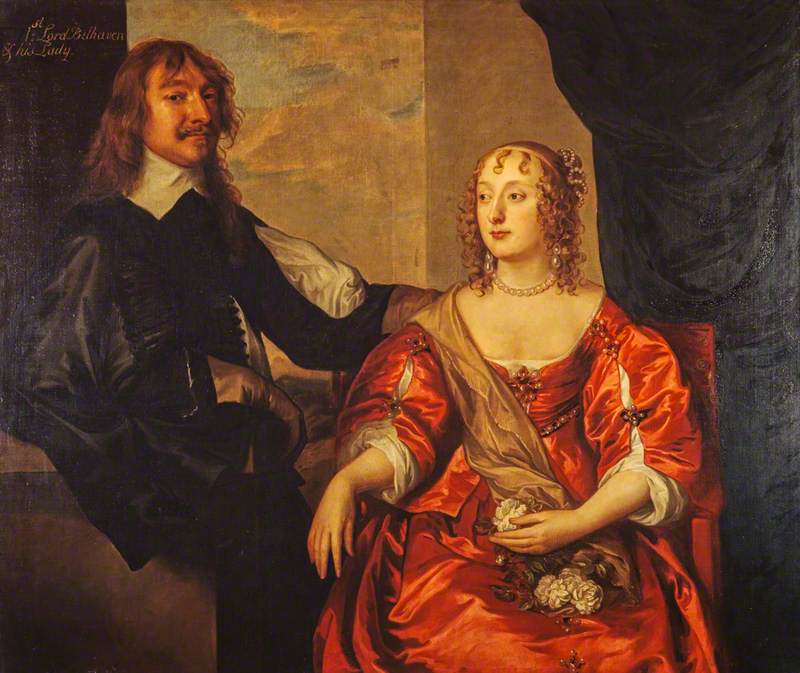
The National Galleries of Scotland's painting is a bit of a mystery. It may have been owned by the Duke and Duchess of Lauderdale. In an 'Estimate' or valuation of Ham House (their London residence) of 1679, there is a piece which matches the description (in addition to the original Van Dyck painting). It is listed as 'A piece of My Lord Belhaven and his Lady after Vandyke, of Sr Peter Lely' and is priced at £20. The National Galleries of Scotland does not know if this painting is the one in their collection but there are several clues that it could be.
At some point after the portraits in Ham House were completed, someone inscribed them with the identities of the sitters. We know these inscriptions are not original as some of the sitters are wrongly identified: for example, one of the pieces is labelled as 'Lionel Tollemache, Earl of Dysart' which would not work with the execution date. Sir Oliver Millar (an expert on Anthony van Dyck and Peter Lely) also concludes that these inscriptions are of a later date in an exhibition catalogue of Lely's work from 1978.
Interestingly, these inscriptions seemingly follow the same style of writing (and may even be by the same hand), possibly to create a visual scheme in Ham House. This is relevant because this distinctive style of writing is not really found on other pieces of the period but is found on the double portrait of Lord and Lady Belhaven in the National Galleries of Scotland. It is therefore possible that the National Galleries of Scotland's painting was at Ham when the inscriptions were added.
If this painting is the one that was at Ham, the 1679 attribution to Lely is likely to be correct: elsewhere in the inventory, other artworks are listed as being copies of originals whereas this painting is noted as being by Lely himself. Also the valuation was conducted the year before Lely died, meaning all of his work had been completed within living memory.
Additionally, early in Lely's career, he not only drew inspiration from Van Dyck but also copied him directly – one example being a copy of a portrait of Algernon Percy, 10th Earl of Northumberland, in a private collection. (The original by Van Dyck is at Alnwick Castle but other copies exist – including one at the National Maritime Museum.)
Van Dyck himself also reproduced his own works during his lifetime. With the original portrait of Lord and Lady Belhaven being dated by Sir Oliver Miller to 1641, this would have been one of the last works to have been painted by him and his studio. This also explains why a reproduction by Lely could have occurred on two accounts. Firstly, if the patrons had wanted a copy of the original, Van Dyck was now dead and so the next best thing would be to turn to the greatest living portraitist in England: Peter Lely. Secondly, Lely draws on Van Dyck most in his early career in England where he arrived in around 1642. It would make sense for Lely to be looking at Van Dyck's most recent works from which to draw inspiration, one of which was of Lord and Lady Belhaven.
As the Duchess of Lauderdale was amongst Lely's most important and prolific patrons, it is also no surprise that a double portrait by Lely might end up in her collection at Ham. The fact that the original Van Dyck was misattributed to Peter Lely in the 1896 will of General W. Bulwer, and the 1921 Portraits in Norfolk Houses by Prince Duleep Singh, additionally suggests that this composition had long associations with the artist after the seventeenth century.
Ham House from the South (around 1675–1679)
c.1675–1679
Hendrick Danckerts (1625–1680) (attributed to) 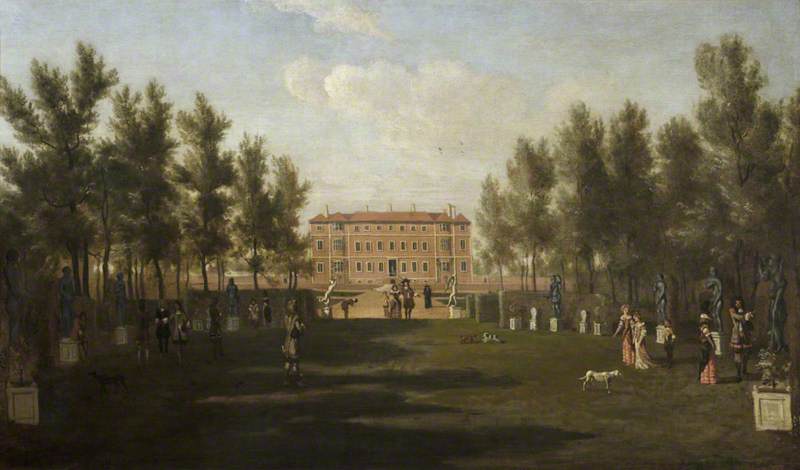
If the painting in the National Galleries of Scotland is the Lely painting described at Ham House in 1679, then how did it end up in Scotland? The copy would have been painted in London, from the original located there – and Lely was operating in London during that time.
The Dukedom of Lauderdale was a Scottish title in Berwickshire and the Duchess was a Murray by birth whose family had come from Fife. This meant that the couple had lands and estates in England and Scotland. The Duke's family (the Maitlands) had possession of Thirlestane Castle since 1587 as well as the estate now known as Lennoxlove since 1345. Appointed as Secretary of State for Scotland in 1660, the Duke of Lauderdale made improvements to Thirlestane and Lennoxlove in the 1670s. Whilst there is no documentary evidence to prove that the painting was moved to one of these houses, it is a possibility. With Ham House already having the original Van Dyck hanging on its walls, it might make sense for the copy to move north. Similarly, copies of a double portrait of the Duke of Lauderdale with the 2nd Duke of Hamilton can be found at both Ham House and Lennoxlove.
The double portrait was bequeathed to the National Galleries of Scotland by Mrs Hamilton Ogilvy Nisbet of Biel in 1921. As previously mentioned, Biel House was the home of the Lord and Lady Belhaven. What's more, Biel is only about 10 miles from Lennoxlove and around 30 miles from Thirlestane, meaning that the Belhavens and the Lauderdales were practically neighbours. There are legal papers in the National Archives of Scotland signed by both Belhaven and Lauderdale, meaning that they had at least interacted with one another. After the death of the Duchess of Lauderdale in 1698, Lennoxlove House passed to her heirs. In 1702 they sold it to the Trustees of the late Frances Teresa Stewart, Duchess of Richmond. She was the cousin of the Lady Belhaven which created a family connection between the Belhavens and Lennoxlove.
John Hamilton (d.1679), 1st Baron Belhaven, Royalist, with his Wife, Margaret Hamilton
Anthony van Dyck (1599–1641) (copy of) 
There is no record of when the painting might have entered the collection at Biel, but this connection could have provided an opportunity for the painting to have moved. Unfortunately, much of the life of double portrait is undocumented so we simply cannot be sure that it is by Lely on existing documentary evidence alone. Like so many stories from the past, it remains a tantalising mystery. Whether or not this painting is by one of the greatest portraitists of the seventeenth century, it is certainly a compelling piece which speaks to the grandeur of the Belhavens and captures their confidence during the reign of Charles I.
Cameron Webster, Art Research Assistant at North Lanarkshire Council
